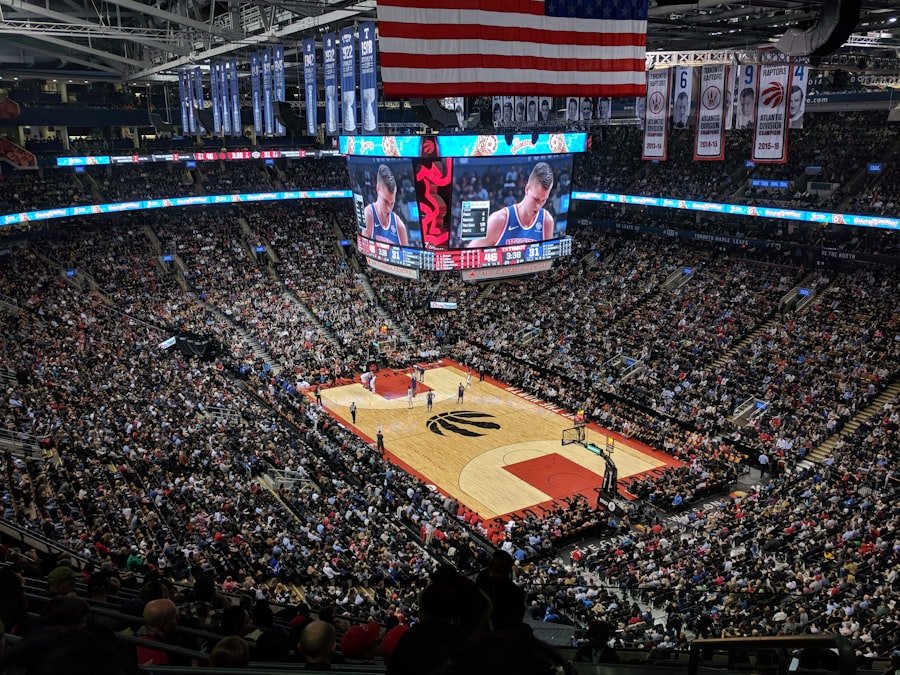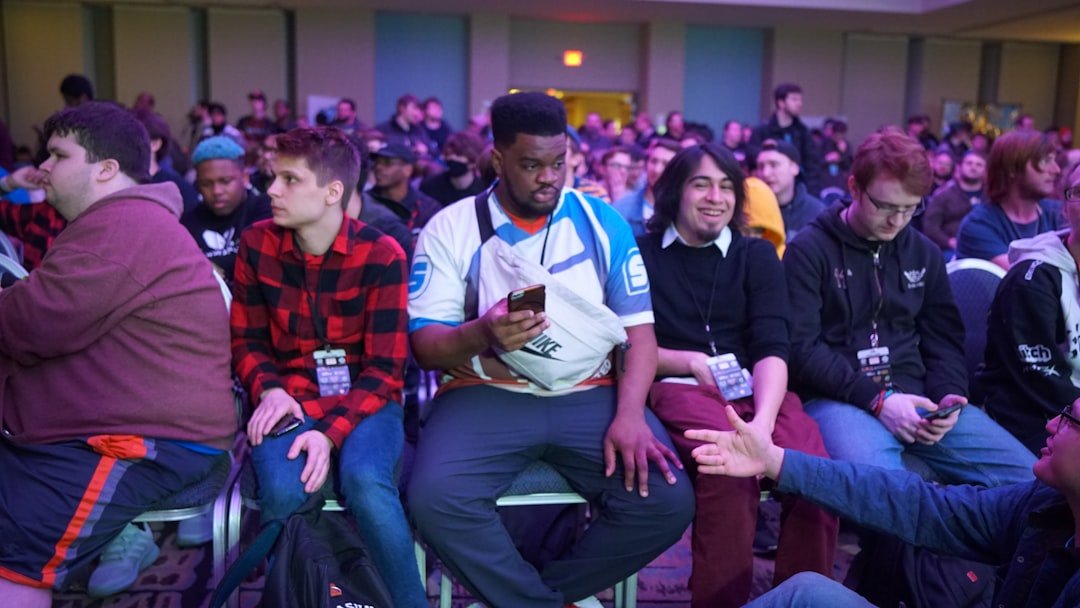Now Reading: The Rise of Esports: A New Frontier in Competitive Gaming
-
01
The Rise of Esports: A New Frontier in Competitive Gaming
The Rise of Esports: A New Frontier in Competitive Gaming

Reflecting on the history of esports, I find it fascinating how this once niche hobby has transformed into a global phenomenon. It all began in the early 1970s when the first video game competitions were held, primarily in college campuses and arcades. The game “Spacewar!” is often credited as one of the first competitive video games, where players would engage in head-to-head battles on early computer systems.
As I delve deeper into the timeline, I see how the 1980s brought about a significant shift with the rise of arcade culture. Tournaments like the “Space Invaders Championship” in 1980 attracted thousands of participants and spectators, laying the groundwork for what would eventually evolve into organized esports. As I trace the evolution further into the 1990s, I notice the emergence of home consoles and personal computers, which expanded access to gaming.
Titles like “Street Fighter II” and “Doom” became staples in competitive gaming circles. The advent of the internet in this era was a game-changer, allowing players to connect and compete from different locations. I can almost feel the excitement of those early online matches, where players would gather in chat rooms and forums to discuss strategies and share their experiences.
By the late 1990s and early 2000s, esports began to gain traction with the establishment of leagues and tournaments, such as the Cyberathlete Professional League (CPL) and the World Cyber Games (WCG). This period marked the transition from casual play to a more structured competitive environment, setting the stage for the explosive growth that would follow.
Key Takeaways
- Esports has evolved from arcade gaming to a global phenomenon, with roots in competitive gaming dating back to the 1970s and 1980s.
- Esports tournaments and events have grown in scale and popularity, with major events filling stadiums and attracting millions of viewers online.
- Esports has had a significant impact on the gaming industry, driving innovation in game development, streaming platforms, and virtual reality technology.
- Technology has played a crucial role in the growth of esports, enabling online multiplayer gaming, live streaming, and virtual reality experiences.
- The business of esports has seen a surge in sponsorships, advertising, and revenue streams, with brands and companies investing heavily in the industry.
The Evolution of Esports Tournaments and Events
As I explore the evolution of esports tournaments and events, I am struck by how they have transformed from small gatherings to massive spectacles that fill arenas. Initially, tournaments were modest affairs, often held in local venues with limited prize pools. However, as interest grew, so did the scale of these events.
I remember watching early tournaments streamed online, where players competed for recognition rather than substantial monetary rewards. The introduction of live streaming platforms like Twitch in 2011 revolutionized how audiences engaged with esports, allowing fans to watch their favorite players in real-time from the comfort of their homes. The growth of esports tournaments has also been marked by increasing professionalism.
Major events like The International for Dota 2 and the League of Legends World Championship have become hallmark occasions in the gaming calendar, attracting millions of viewers worldwide. I find it remarkable how these tournaments not only showcase top-tier talent but also create a sense of community among fans. The atmosphere at these events is electric, with fans cheering for their favorite teams and players, creating an experience akin to traditional sports.
The prize pools for these tournaments have skyrocketed, with The International boasting over $40 million in 2021 alone. This financial incentive has drawn in top talent from around the globe, further elevating the competitive landscape.
The Impact of Esports on the Gaming Industry

The impact of esports on the gaming industry is profound and multifaceted. As I analyze this influence, I see how it has reshaped game development and marketing strategies. Game developers are increasingly designing titles with competitive play in mind, incorporating features that cater to both casual gamers and aspiring professionals.
I can recall instances where developers have actively engaged with the esports community during the development process, seeking feedback to create balanced gameplay experiences that resonate with competitive players. Moreover, esports has opened up new revenue streams for game publishers. The rise of competitive gaming has led to increased sales for titles that are popular in the esports scene.
I find it intriguing how games like Fortnite and Call of Duty have not only become household names but have also generated significant revenue through in-game purchases and battle passes tied to their competitive scenes. This symbiotic relationship between esports and game development has created a thriving ecosystem that benefits both players and publishers alike.
The Role of Technology in the Growth of Esports
Technology plays a pivotal role in the growth of esports, shaping everything from gameplay mechanics to audience engagement. As I reflect on this aspect, I am particularly fascinated by advancements in streaming technology that have made it easier for fans to access live competitions. High-definition streaming, coupled with interactive features like chat rooms and real-time statistics, has transformed how I experience esports events.
I can vividly recall moments when I felt a part of a larger community while watching a tournament unfold live online. Additionally, technology has enhanced player performance through tools like analytics and training software. Professional teams now utilize data-driven approaches to analyze gameplay and improve strategies.
I find it remarkable how players can review their performances through detailed statistics and video analysis, allowing them to refine their skills continuously. This technological integration has elevated the level of competition, making esports more exciting for both players and spectators.
The Business of Esports: Sponsorships, Advertising, and Revenue Streams
The business side of esports is as dynamic as its competitive landscape. As I delve into this realm, I am struck by how sponsorships and advertising have become integral components of the industry’s financial ecosystem. Major brands are increasingly recognizing the potential of esports as a marketing platform, leading to lucrative partnerships with teams and events.
I remember seeing familiar logos on team jerseys and event banners, a testament to how far esports has come in attracting corporate interest. Moreover, revenue streams in esports extend beyond traditional sponsorships. Merchandise sales, ticket sales for live events, and digital content creation have all contributed to the financial viability of teams and organizations.
I find it fascinating how content creators on platforms like YouTube and Twitch have carved out their niches within this ecosystem, generating income through ad revenue and viewer donations while promoting their favorite games and teams. This diversification of revenue sources has allowed many esports organizations to thrive in an ever-evolving market.
The Professionalization of Esports: Training, Coaching, and Team Management

The Importance of Coaching
Coaching has emerged as a vital component of professional esports teams. Coaches play a crucial role in developing strategies, analyzing opponents, and providing guidance to players during competitions. Their expertise is invaluable in helping teams gain a competitive edge.
A Holistic Approach to Team Management
I find it fascinating how team management has evolved to encompass not only gameplay tactics but also aspects like mental coaching and team dynamics. This comprehensive approach ensures that players are not only skilled but also mentally prepared to handle the pressures of high-stakes competition.
The Discipline of Peak Performance
Maintaining peak performance requires an extraordinary level of discipline, as players must balance their physical health and mental well-being with the demands of intense training and competition. It is a testament to their dedication and perseverance that they are able to perform at such high levels.
The Cultural and Social Influence of Esports
Esports has transcended mere entertainment; it has become a cultural phenomenon that influences social interactions and community building. As I reflect on this impact, I see how gaming communities foster connections among individuals from diverse backgrounds. Online platforms allow me to engage with fellow fans worldwide, sharing experiences and forming friendships based on our shared passion for gaming.
Moreover, esports has challenged traditional notions of sportsmanship and competition. It has created a space where individuals can express themselves freely while competing at high levels. I appreciate how events often promote inclusivity and diversity, showcasing players from various demographics and backgrounds.
This cultural shift is significant as it encourages acceptance within gaming communities and beyond.
The Future of Esports: Trends, Challenges, and Opportunities
Looking ahead to the future of esports fills me with excitement as well as curiosity about potential challenges that lie ahead. One trend that stands out is the increasing integration of virtual reality (VR) and augmented reality (AR) technologies into gaming experiences. As these technologies continue to develop, I envision immersive experiences that could redefine how we engage with esports events.
However, challenges remain on the horizon as well. Issues such as player burnout, mental health concerns, and maintaining fair competition standards are critical topics that need addressing as the industry grows. I believe that fostering a supportive environment for players will be essential in ensuring long-term sustainability within esports.
In conclusion, as I reflect on my journey through the world of esports—from its humble beginnings to its current status as a global phenomenon—I am filled with anticipation for what lies ahead. The evolution of tournaments, technological advancements, business opportunities, professionalization efforts, cultural influences, and emerging trends all contribute to an ever-changing landscape that continues to captivate millions around the world.
Esports has become a global phenomenon, with millions of fans tuning in to watch their favorite teams compete in various video game tournaments. One interesting trend in the world of esports is the rise of mobile gaming as a competitive platform. According to a recent article on Gamers.co, mobile esports are gaining popularity due to the accessibility and convenience of playing on smartphones and tablets. This shift towards mobile gaming is just one example of how the esports industry is constantly evolving and embracing new technologies.
FAQs
What are esports?
Esports, short for electronic sports, refers to competitive video gaming. Players and teams compete in various video games, often in organized leagues and tournaments, for prize money and recognition.
What are some popular esports games?
Some popular esports games include League of Legends, Dota 2, Counter-Strike: Global Offensive, Overwatch, and Fortnite. These games have large player bases and dedicated competitive scenes.
How do esports competitions work?
Esports competitions can take place online or at live events in arenas or stadiums. Players or teams compete against each other in a series of matches, with the winners advancing through the tournament bracket until a champion is crowned.
Are there professional esports players?
Yes, there are professional esports players who make a living by competing in tournaments, signing contracts with teams, and securing sponsorships. Some top players have become celebrities within the gaming community.
How big is the esports industry?
The esports industry has experienced rapid growth in recent years and is now worth billions of dollars. It encompasses not only tournament prize pools and sponsorships but also merchandise, media rights, and advertising.
Is esports considered a real sport?
While there is ongoing debate about whether esports should be classified as a traditional sport, it is recognized as a legitimate form of competition by many organizations and has a dedicated fan base around the world.




























Pingback: Investing in Collectible Gaming Merch: What's Worth It?
Pingback: The Impact of Video Games on Hollywood Films
Pingback: Top Monitors for Easing Eye Strain
Pingback: The Evolution of Battle Royale Games: From PUBG to Today